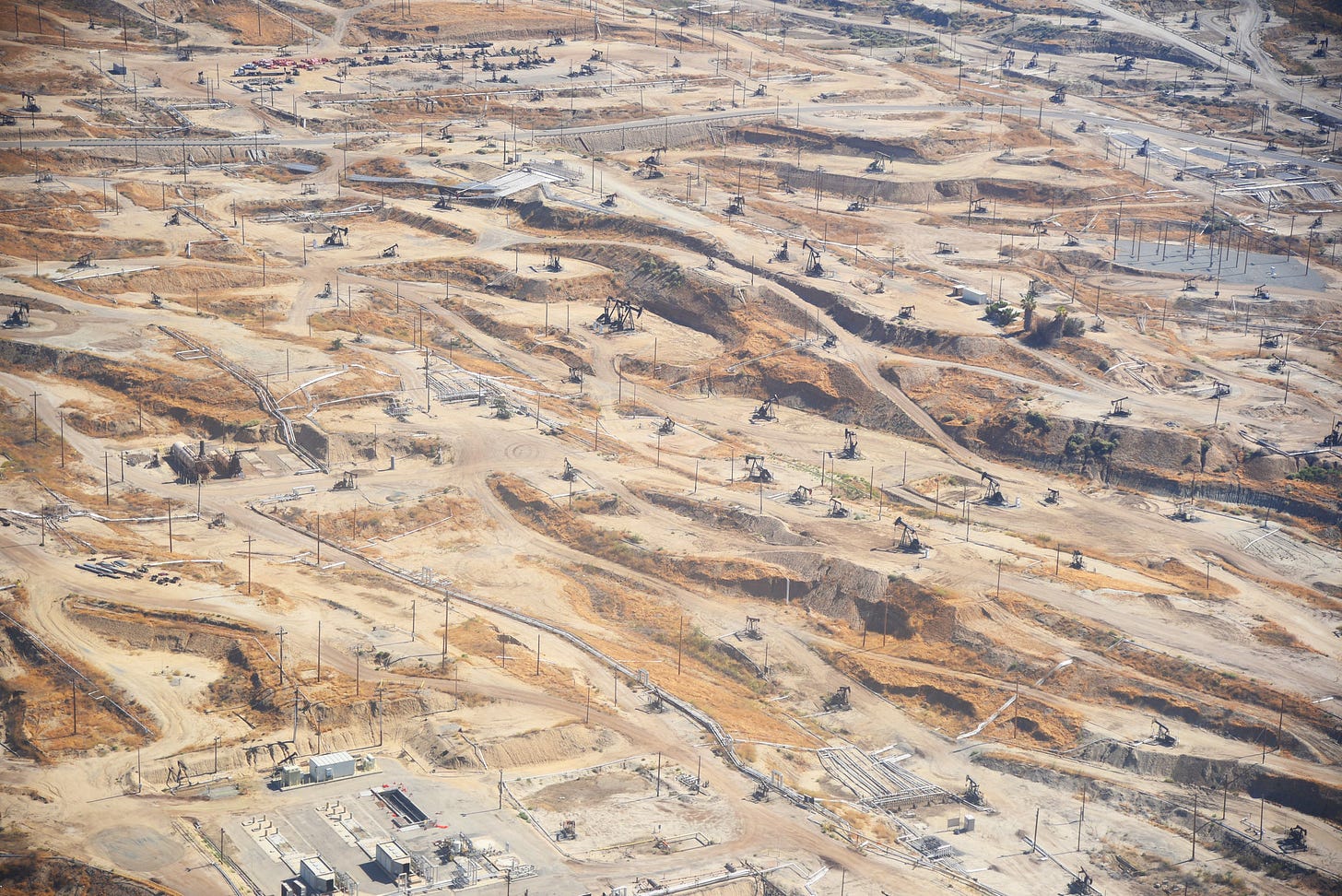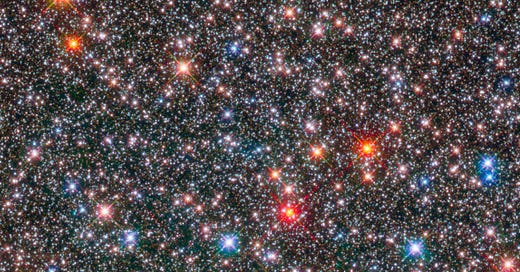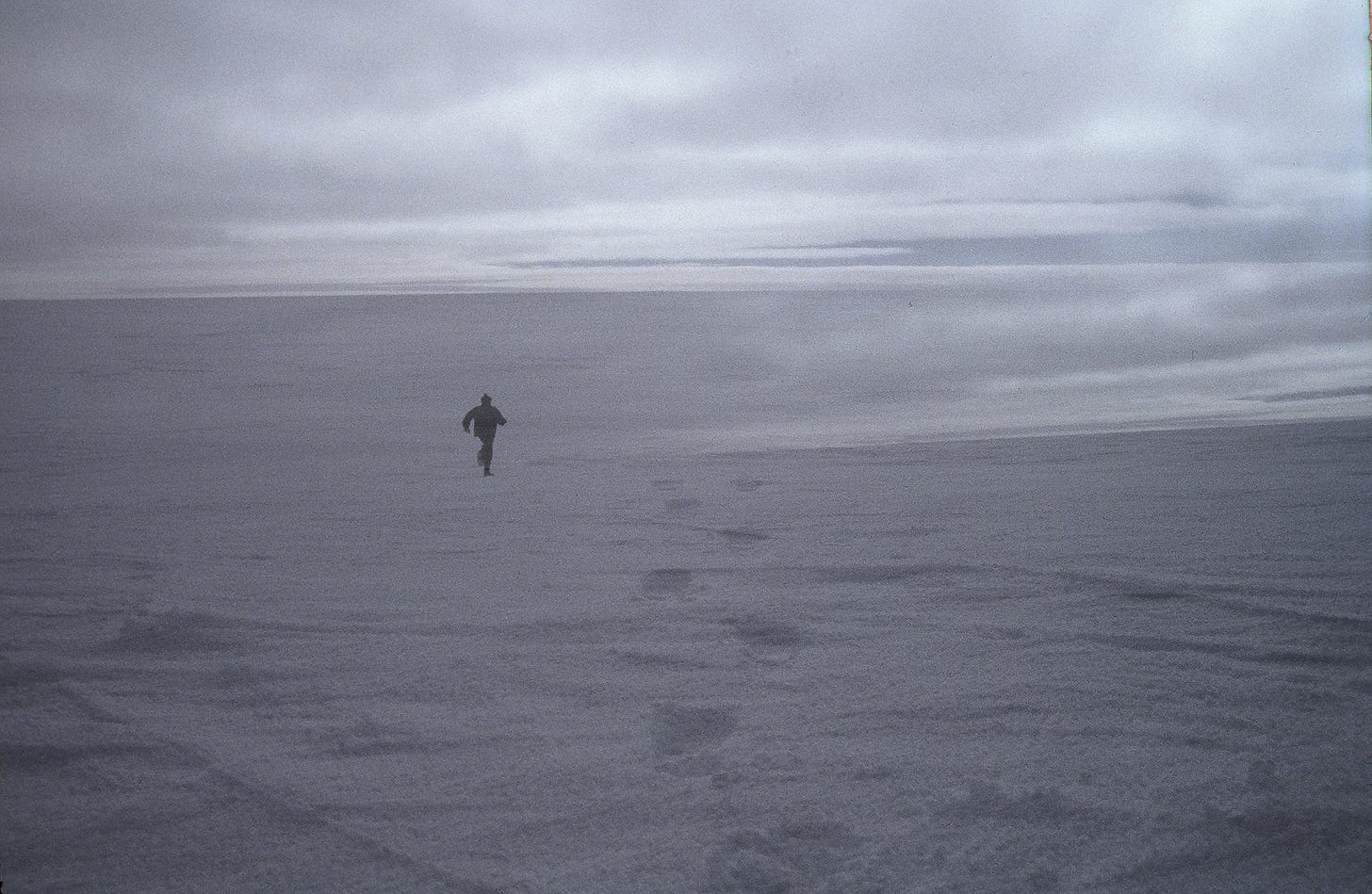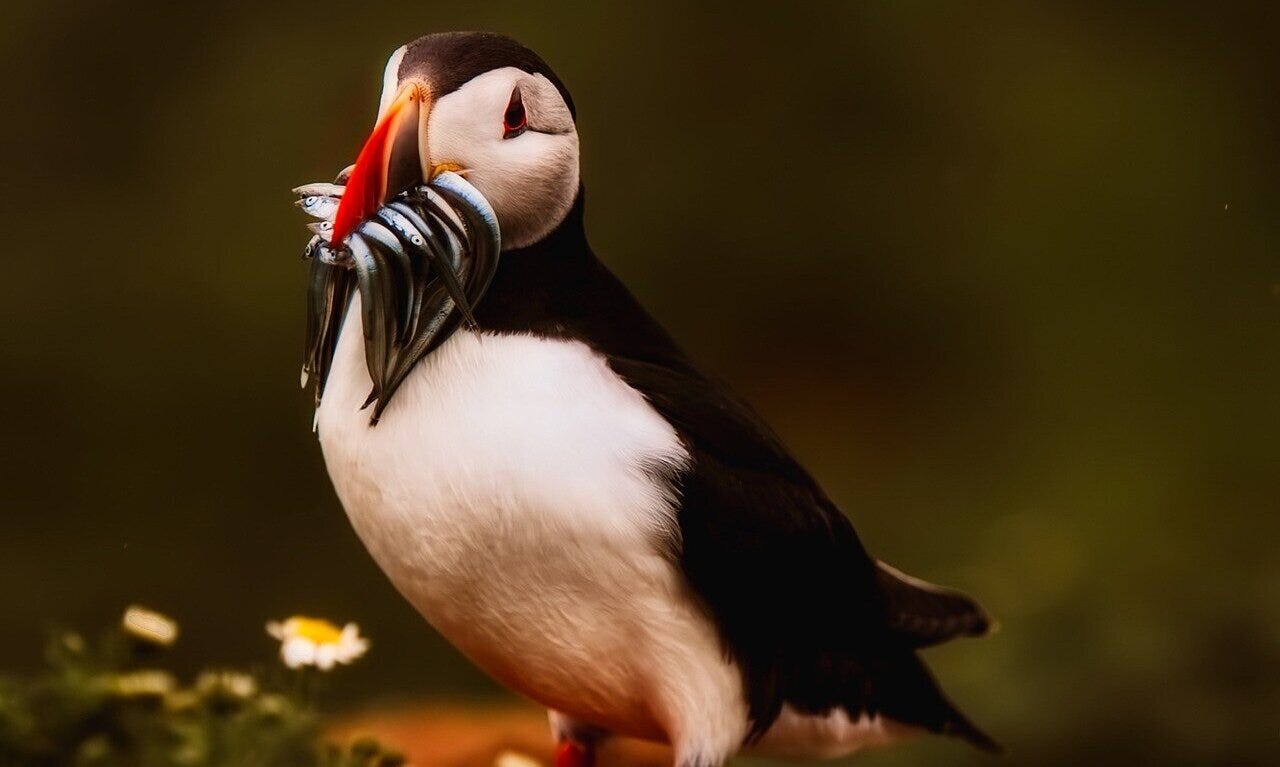Hello everyone:
The quote of the week is a poem by William Blake:
Joy and woe are woven fine,
A clothing for the soul divine;
Under every grief and pine
Runs a joy with silken twine.
It is right it should be so;
We are made for joy and woe;
And when this we rightly know,
Through the world we safely go.
- from Auguries of InnocenceAs always, please remember to scroll past the end of the essay to read some curated Anthropocene news.
Now on to this week’s writing:
I'm in a philosophical mood this week. Which is a fancy way of saying I’m grieving. Someone Heather and I love, who is too young to die, is dying. I won’t tell the tale here, but it’s a story of intelligence, beauty, sweetness, and deep human value being erased from lives that cannot bear the erasure. And somehow these stories are told every day. You know them too.
There’s so much grief and loss darkening the tapestry these days, both close to home and far afield: under bomb and rubble, under drought and flood, undernourished and misunderstood. As the days grow short here in the slant-lit northern hemisphere, our grief and loss seem to fit the season and the deep night of the solstice. It is, as Melville once wrote, “a damp, drizzly November in my soul.”
I believe there are no words to greet us at the end of life, and I’m convinced there are no words that can adequately describe the experience of the end and what comes after, be it physical or metaphysical. But there are good words for us here and now, amid our grief and our questions about the nature of life. They’re everywhere.
Here, for instance, is the latest from the wonderful Maria Popova at her lyrical, invaluable newsletter, The Marginalian, in a piece called “What Happens When We Die,” placing our bodies and minds in the endless universe:
Here we are, you and me… each of us a trembling totality, made of particles both absolutely vulnerable and absolutely indestructible, hungering for absolutes in a universe of relatives, hungering for permanence in a universe of ceaseless change, famished for meaning, for beauty, for emblems of existence.
And then I read a fascinating interview, posted just last week, with astrophysicist Marcelo Gleiser in Nautilus. His discussion of our place in the universe is a breath of fresh air in a dark void. Gleiser is working to convince us – to remind us, really – that we are not unimportant motes of dust in a heartless universe. We are astonishing clusters of stardust that speak lyrically to and about the universe, or as he puts it, we are “how the universe is telling its own story.” All of this makes us extravagantly strange and wonderful, as wonderful as the blue/green orb, glistening with life, which has nurtured us amidst the impossibly vast emptiness of space.
But, Gleiser says, we’ve been living a lie for some time now. According to him, our modern urge to leave the planet, to look for life elsewhere that mirrors our own, is rooted in our response to Copernicus’s revelation that the Earth is not the center of the universe:
The post-Copernican narrative decreased the value of our world, and we constructed a whole civilization based on the idea that we can use and abuse it. We built giant cities and industries by essentially consuming the entrails of our planet. Oil, gas, and coal—the insides of the planet—fed our technologies, and it all worked until it didn’t.

This is an origin story for the Anthropocene that I’d never considered. It’s as if Gleiser is describing a power vacuum in which the gods who infused the living world were deposed as soon as we learned that we live on one planet of many, circling a sun that is one of many, in a solar system that is one of many, and so on. So here we are, having taken the throne and made ourselves the center of our own universe, with a single god by our side, throwing the living world into the bonfire of our vanity, and claiming a knowledge that makes us supreme among all life.
Gleiser has an answer to that too:
I wrote a book called The Island of Knowledge a few years ago, where I said that the island of knowledge is surrounded by the ocean of the unknown. And as the island grows, so does its periphery, which is the boundary between the known and the unknown. So the paradox of knowledge is that the more you learn, the more you discover that you don’t know.
I really love his island metaphor. It’s an elegant image for a revelation we all have on a personal level as we grow up. Each on our own island, we eventually see beyond the horizon of our experience to the unknowns we’ll never reach. We’ll never know everything, or even much about most things, and as we become acquainted with grief we know we’ll never understand the music of fate.
Anthropocene culture, though, sees only the growing island. Gleiser is offering a cosmological truth, not an engineering one, and we tend to forget in our engineering of the planet that we are all deeply irrational and mystical creatures. For his part, Gleiser describes himself as a “rational mystic,” which is perhaps what we should all aspire to. Who among us does not hold science in one hand and dreams in the other?
This era of planetary disruption has been sold to us as a great flowering of human ingenuity, and there’s plenty of truth in that, but the Anthropocene is also a tragic failure of imagination. We look to the stars for other intelligent life, blind to the reality that in our current form we're less fit for a stable long-term existence than nearly every species around us, from asters to zebras. Far too much of what we proudly call human imagination for the last few centuries has been a narrow-minded preening for the mirror. We're consuming the world, largely oblivious to both the consumption and the world. The planet we've been making - drier, more barren, as deprived of stable habitats as it is of species - is deeply self-referential and thus ecologically shallow.
We've forgotten that what ignores us saves us, that what we need to survive is a world so full of life that we are both necessary and subsidiary, woven firmly into the vibrant community of species. It isn't merely that we need to acknowledge that we are not what gives the planet meaning, but that we need to include in our vision of ourselves a vision of everything else too, all of it thriving, a flood of life around us that we have nurtured enough that it can return to nurturing us.
If we continue on this ravenous industrial path of determining life and death across oceans and continents – soybeans and corn over rainforests, for example – we will embrace death for many of us as well. The constant tolling of concerns for human health and human societies that we hear these days amidst the rapid warming of the climate are also knells for the ecologies beneath our wheels.
That line, What ignores us saves us, I wrote in my Antarctic notebooks as a young poet trying to make sense of, even as I fell in love with, a continent of ice. I felt then, and feel even more strongly now, that it is a profoundly necessary human experience to be overwhelmed by the power and mystery of existence. (Gleiser cites Einstein, who wrote that “the most beautiful experience we can have is the mysterious.”) But I don’t mean merely the mystery of our own existence. I mean the wonder of the greater living community gleaming within the void, and I mean the void as well. They’re all woven together, as Gleiser so beautifully explains:
We carry the whole history of the universe in ourselves. The atoms in your body—the iron in your blood, the calcium in your bones—came from stars that exploded 5 billion years ago. They traveled gazillions of light-years to fall four and a half billion years ago into this nebula that was collapsing to become the sun and the planets. And then in one of these planets, which happens to have water and carbon and magnesium and phosphorus, molecules organized themselves and became alive—and then began to evolve, three and a half billion years ago, into a species that is telling this story. That is not something that is going to be happening all over the universe!
I played with What ignores us saves us in my notebooks for years, and mentioned it here in a recent piece, “Reimagining Rain,” but have never quite known what to do with it. I offer it to you here this week, so you can wrestle with it. Let me add some Antarctic context, so you can glimpse its origin story.
Some of what I’ll say here will sound like an artsy word-salad to some of you, but there’s no helping it. If you’ve spent several years on the Moon, not much of what you most deeply experienced will make sense to others. But like Coleridge’s ancient mariner shrugging under the weight of his white albatross, I still try:
Antarctica is the last continental stronghold of the silence and power behind nature. In the vast interior, where you could lay Australia down and cover it with snow, time feels like a substance blown about by the wind, pooling in chilled reservoirs. Space unfolds outward, taking light with it. The whole continent – every sand-like grain of snow, every wind-etched stone, all 7.2 million cubic miles of ice – glitters with its refusal to acknowledge us.
We are nothing here, even as we’ve begun to rupture the ice shelves with our warming of the atmosphere and oceans. There are millions of prehuman and nonhuman years gathered here in the layers of ice, documenting but unaware of our presence. That vast indifference will be our salvation if we can only give it the respect it’s due. The ice precedes and supersedes us, as does all of life. We’re still young and unaware.
What ignores us saves us. Antarctica’s hostility to life reminds us that the planetary systems we’re altering will become inhospitable to the human experiment. If we fail in our efforts to stave off the sixth mass extinction, the Earth will evolve into other lush ecologies without us, though only on a timeframe so long as to be alien to human sensibility.
I should confess that I’m imagining a gentle rebuttal from Robin Wall Kimmerer, author of the great and wise book, Braiding Sweetgrass. She might say that there’s no marked indifference toward humans in the living world, and that, in fact, far from ignoring us the community of life is constantly nurturing us and offering gifts. Our salvation, then, lies not in being ignored but in recognizing the landscape of gifts and responding with gratitude and reciprocity. I agree, but am trying to provide some planetary context for our modern hubris.
Many years after I left Antarctica, I found an echo of the line, thanks to Rod MacIver at his beautiful literary art journal Heron Dance, where he quoted Belden Lane’s book, The Solace of Fierce Landscapes: Exploring Desert and Mountain Spirituality: “The presence of wild landscapes awakens a silence in us, refreshes our courage with the purity of their detachment. . . We are saved in the end by the things that ignore us.”
And the echoes are everywhere, really. Most of us some of the time, and some of us most of the time, are deeply conscious that the natural grace and power of the world are still present. Here’s a whale researcher in a Wired article talking about how what she loves most about humpbacks is their indifference:
“This animal is 40 feet long and weighs 75,000 pounds, and it doesn’t give a shit about you,” she told me. “Every breath it takes is grander than my entire existence.”
And here’s Rod MacIver again, in a recent Heron Dance post, “Measuring Success,” making the connection between wildness, beauty, and human purpose:
Living in a deep awareness of the beauty that surrounds us, living in harmony with that beauty, in a kind of cocoon of peace that naturally follows out of harmony with beauty – that is success in life.
And more concisely, here’s a formulation from Patrick, a subscriber here, who summarizes a durable right relationship with the living world: “reciprocity = resilience.”
Civilizational resilience will require that we respect, love, and, to whatever extent possible, make sacred the living world. Marcelo Gleiser illustrates the idea of re-sacralization (making things sacred again) in the interview:
The Buddhist monk Thich Nhat Hanh has a beautiful concept called “interbeing,” which he described this way. He said: Let’s say you’re reading a poem, and the poem is printed on a sheet of paper. Well, that paper came from a tree. The tree only grew because there is water and there is sunlight. But the sun is a star, and the star is shining because there is a universe that developed stars. So every time you look at a piece of paper, you are connected to the rest of the universe… And that’s what I’m talking about: the re-sacralization of the planet.
If, amidst our ordinary griefs and the extraordinary grief many of us feel for the disrupted world, we do not develop within ourselves some version of that ancient and sacred sense of community – animal, vegetable, mineral all united and vital – which characterized most human cultures and most of human history, we'll remain stuck in a hot, impoverished world of our own making, as impoverished as our Anthropocene fantasies, as impoverished as our digital lives, as impoverished as those few billion people who will soon be pushed to the brink by a hotter world.
We can start by simply embracing the mystery. We can love what we cannot sense, what we cannot know, what we will never fully understand. Science is a marvel among marvels, but it is still an island.
Mystery is the word of the day, every day. Like children, we’re still figuring out how our bodies work: A new major organ in the human body, a full-body fluid-filled connective tissue called the interstitium, was discovered in recent years, despite being vital and visible all along. And we’re only now beginning to map the complex microbial populations that make up what we think of as our “individual” selves. We’re learning that each of us is a community in an interlocked chain of communities, from the microbial to the planetary. Beyond the planet, we can only account for about 7% of the matter in the universe. Within consciousness, we scarcely understand the past, much less foresee the future. The too-busy present is a blur. Our minds are moving targets which value narrative over reality. Other people, even those we share our lives with, are often a puzzle. When we love those people, and when they die, our lives suddenly become rivers we can barely swim.
Luckily, we have models of resilience all around us: the life that persists despite the pressures of the Anthropocene. Here in my part of the world, I can witness the gray fox trotting across busy roads on her ancient hunt, and the grass spearing its way up through the cracked pavement. There are Atlantic puffins changing their feeding habits, and hemlocks hushing the wind despite the invasion of wooly adelgids. Everywhere there are forests rewilded by the good souls who want a greener world. Across Canada snow is falling on scorched moss.
We should all be so resilient.
The miracle of rewilding is that life will thrive if we leave it alone or, as needed, give it a little boost. Much of the world can heal if we simply follow the Hippocratic notion of First, do no harm.
Perhaps, then, my line should read like this: What ignores us saves us, if we let it.
Nothing I’ve written here helps much with the grief of losing a loved one, or even allays much of the dread that accompanies the awareness of the multi-generational task ahead of us to protect and heal the living world. But we could do worse than embracing the stars above, the asters below, the stardust within, and the mystery that surrounds all of us. In fact, we can do better because of that embrace.
Thanks for sticking with me.
In other Anthropocene news:
From Krista Tippet at On Being, an uplifting conversation with Christiana Figueres, Executive Secretary of the United Nations Framework Convention on Climate Change from 2010-2016, and widely regarded as the force behind the 2015 Paris Agreement. The podcast promises that
If you have wondered how to keep hope alive amidst a thousand reasons to despair, if you are ready to take your despair as fuel — intrigued by the idea of stepping into love and immediate realities of abundance and regeneration — this conversation is for you.
From Reasons to be Cheerful, “making wetlands a normal part of the working farm landscape.” The path to fixing the massive dead zone in the Gulf of Mexico starts way upstream in the farms that line the Mississippi watershed. The creation of small wetlands, strategically placed between fields and the water, can absorb much of the runoff of nitrogen and phosphorus from over-fertilized crops that otherwise seep tons of unwanted nutrients into the river. One organization creating and protecting wetlands in the Midwest, where agriculture has largely erased them, is The Wetlands Initiative.
Also from Reasons to Be Cheerful, a good-news story of locally-controlled reforestation in India. It’s been incredibly beneficial for the local climate, for the economy, for the aquifer, and for the abundance of life in general.
From Reuters, a nicely-illustrated deep dive into the pros and cons of deep-sea mining. The article does a good job of discussing the biological and ecological effects of bulldozing the deep-sea floor, but doesn’t discuss some things that may make such mining less necessary, like reduced energy consumption and alternative battery technologies
From the Overpopulation Project, a new study finds that most countries with shrinking population actually have better macroeconomic outcomes (GDP growth, labor force participation, and unemployment) than the world average. This belies the fears heard so often that a reduction in population will damage economies.
From DeSmog, their Climate Disinformation Database is an incredibly rich trove of information on the corporations, organizations, and individuals who “have helped to delay and distract the public and our elected leaders from taking needed action to reduce greenhouse gas pollution and fight global warming.”
From the Post, the importance of early adopters of climate-friendly tech. The article provides a good summary of how successfully the U.S. is making the switch to electric heat pumps, heat pump water heaters, EVs, and rooftop solar.
From the Times, the 5th National Climate Assessment (NCA5) report is out, and U.S. residents can use it to explore what changes are happening – and expected – where you live. You can go directly to the NCA5 report here. The White House announced the release of the report today alongside its announcement of 6 billion dollars being made available “to make communities across the country more resilient to the impacts of climate change, including by strengthening America’s aging electric grid infrastructure, reducing flood risk to communities, supporting conservation efforts, and advancing environmental justice.” The funds come from the Inflation Reduction Act, the Bipartisan Infrastructure Law, the EPA, and FEMA.
From Sam Matey at the Weekly Anthropocene, an interview with the Senior Wolf Advocate at the Center for Biological Diversity, who describes the progress and setbacks to wolf recovery in the U.S., and who nicely articulates the hysterical, fearful, unjustified response in the rural West to the presence of even a single wolf.
A few stories from Inside Climate News: 1) some excitement about Michigan’s new plan to convert to clean energy; 2) landowners have successfully fought back against the insanity of pipelines carrying CO2 from ethanol plants all through the Midwest; 3) the third round of talks for the proposed International Plastics Treaty are underway in Nairobi, with hopes that it will lead to firm commitments to limit the production of plastics.









How to respond or offer commentary to such an essay that covers life, death, mystery, wonder, gratitude, stars and flowers- indeed all things both great and small, shining and dark, valued and ignored... how? Just to suggest, as I did once elsewhere to that title phrase, that we must join the things that ignore us and learn to ignore ourselves, to transcend that river of sensations, thoughts, visual and auditory perceptions, moods, musings, emotions, dogs barking, sycamores, steaming coffee, glinting frost, aching hearts... When we can ignore and transcend all these things that are ultimately us, Something very bright and wondrous emerges, we become radiant and vast, loving impartially..a song lovely beyond our greatest capacity to sing or hear... a song without singer or auditor.
Your sublime essay.
Your artsy word salad is delicious! This is a profound and thoughtful essay that exemplifies the kind of nuanced thinking and the types of conversations that we need to embrace. There are no easy answers to our most pressing questions. I like your suggestion to nurture life so it can nurture us. I also try to follow the advice of stepping into love and using despair as fuel for personal growth. Your reference to wetland restoration in the Midwest is something I am working on here in IL. I visit the Wetland Initiative's Dixon Waterfowl Refuge as often as I can. It is an island of wildness that never ceases to amaze me. Thank you for writing such a wonderful essay.